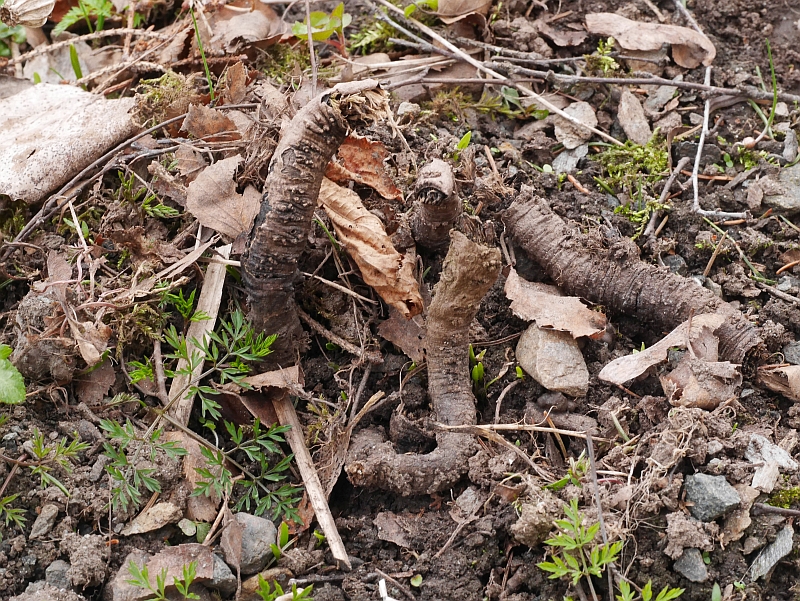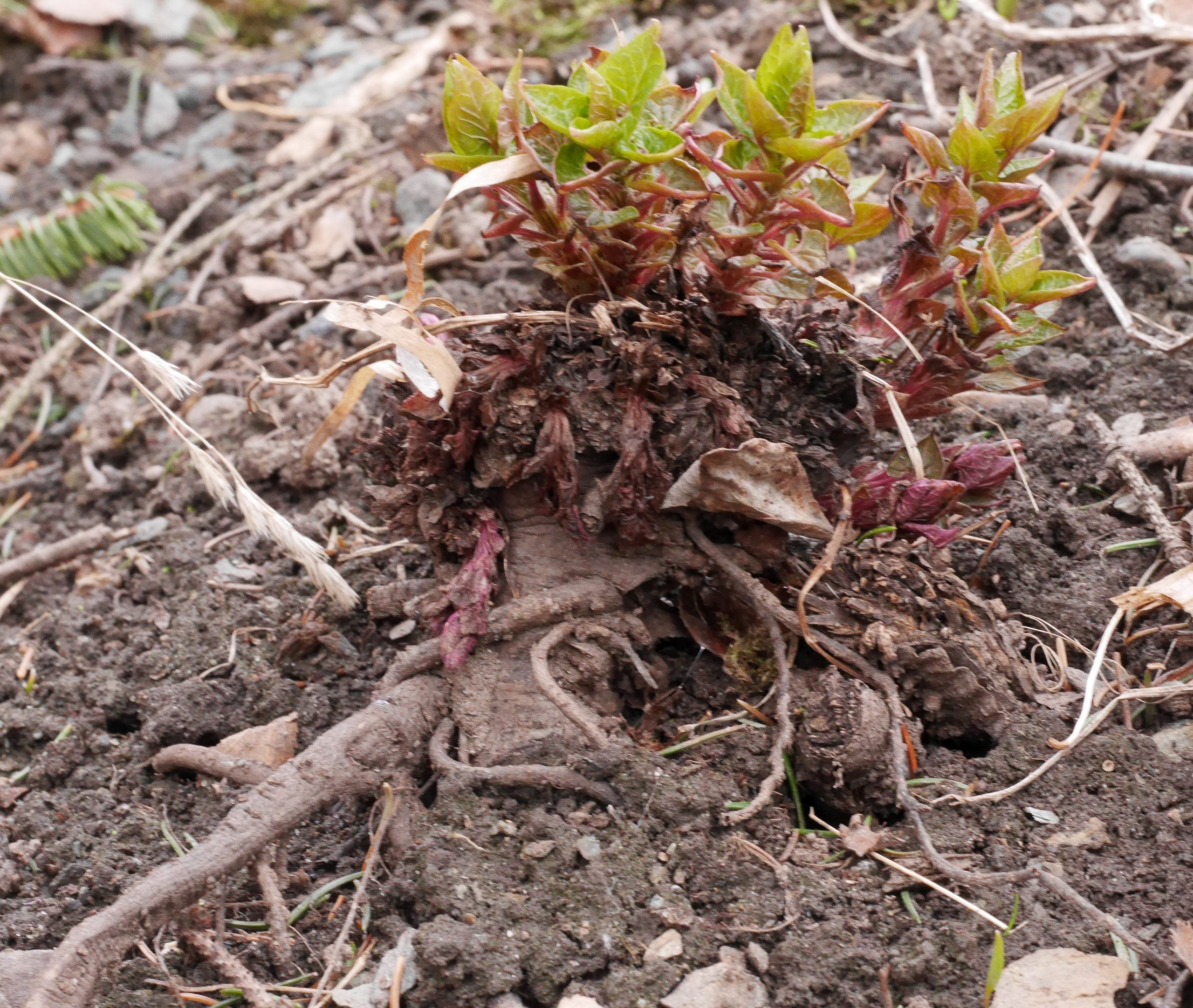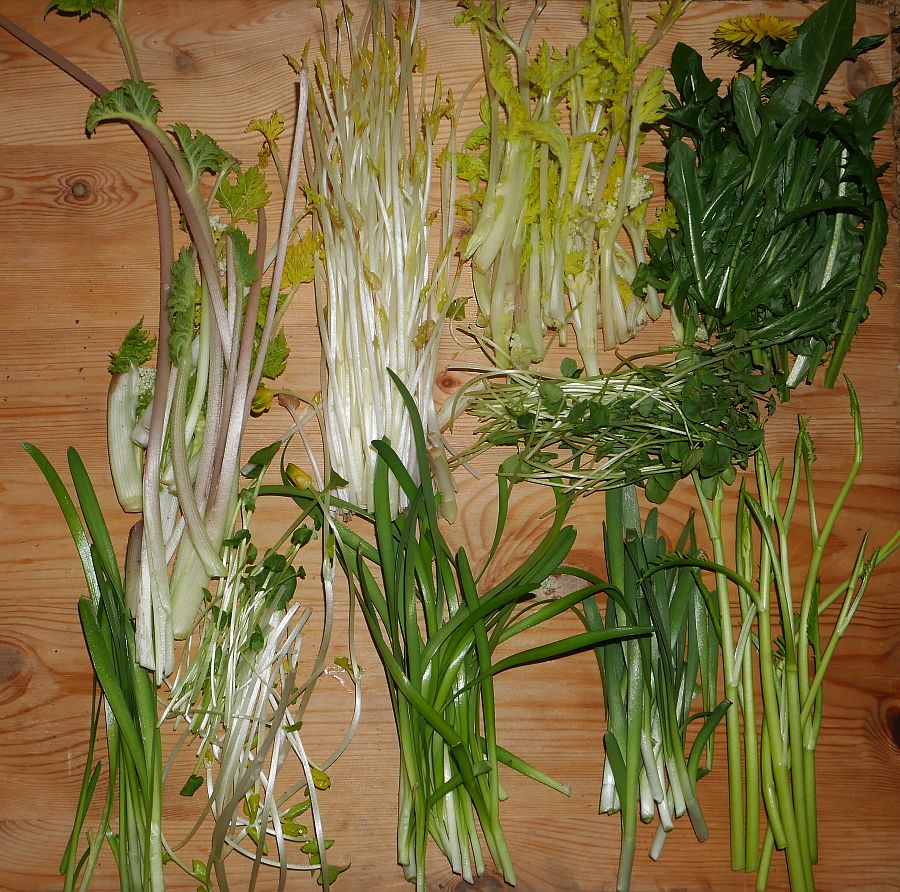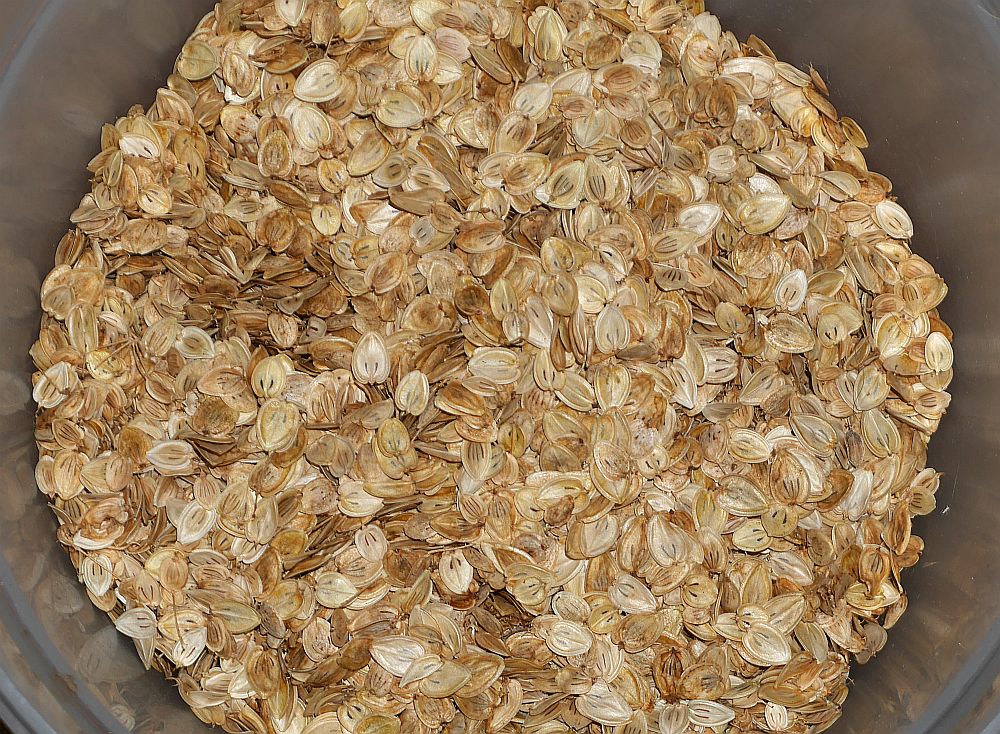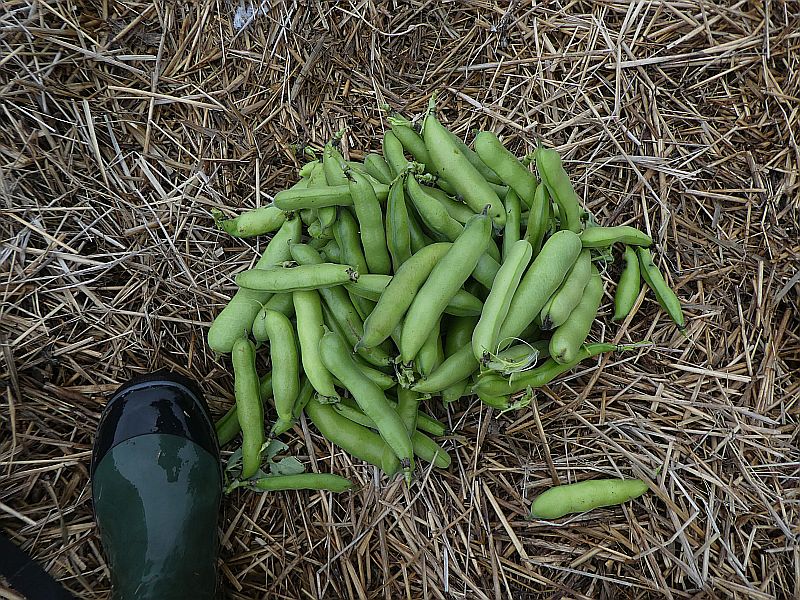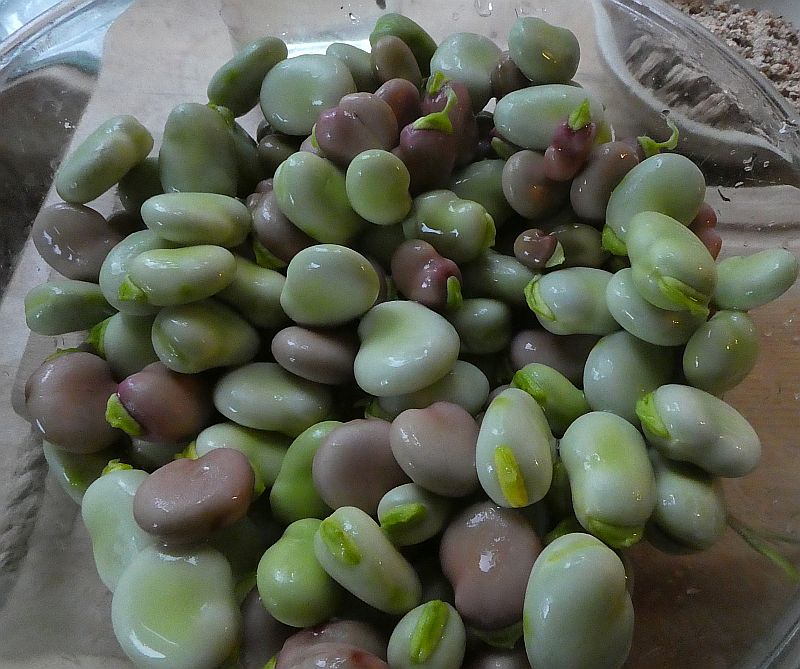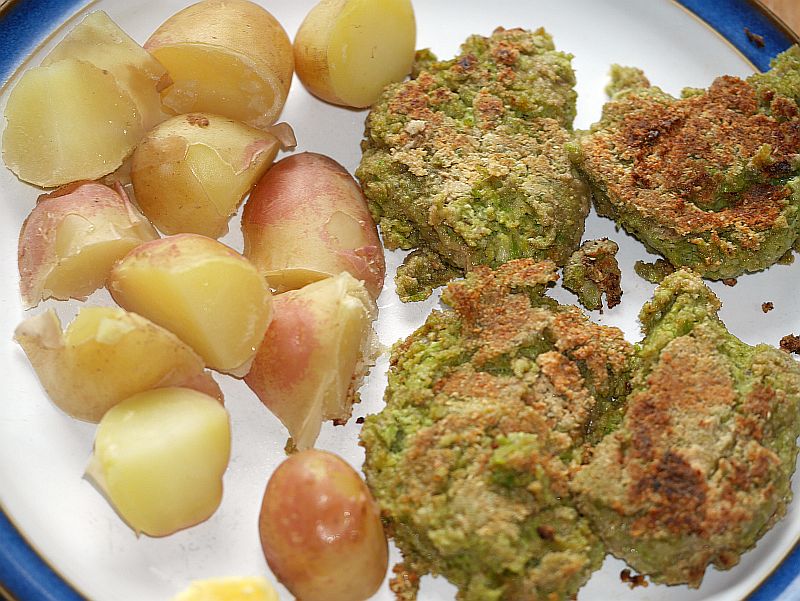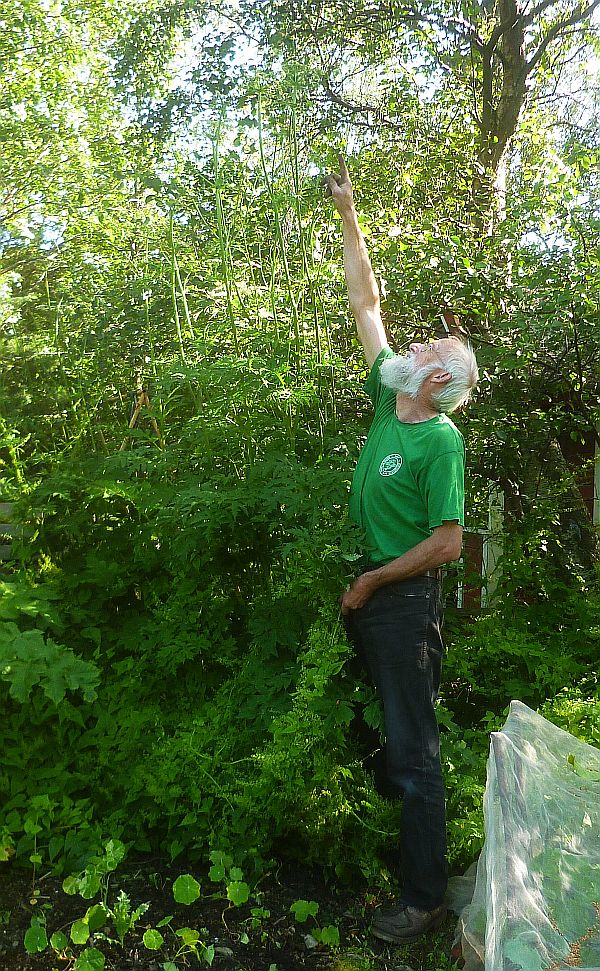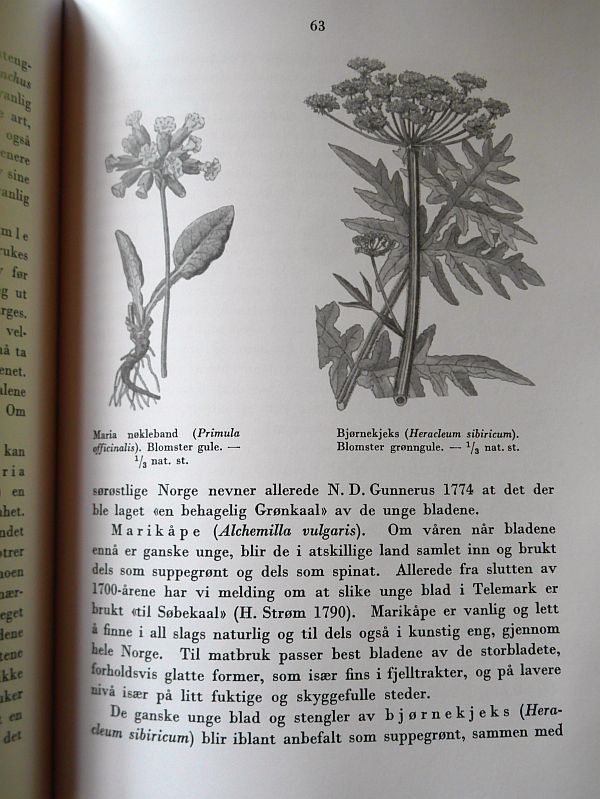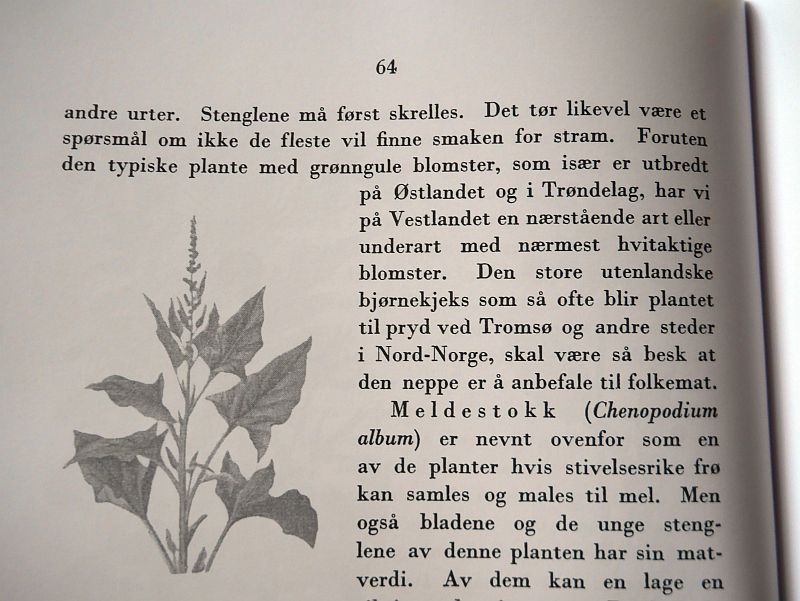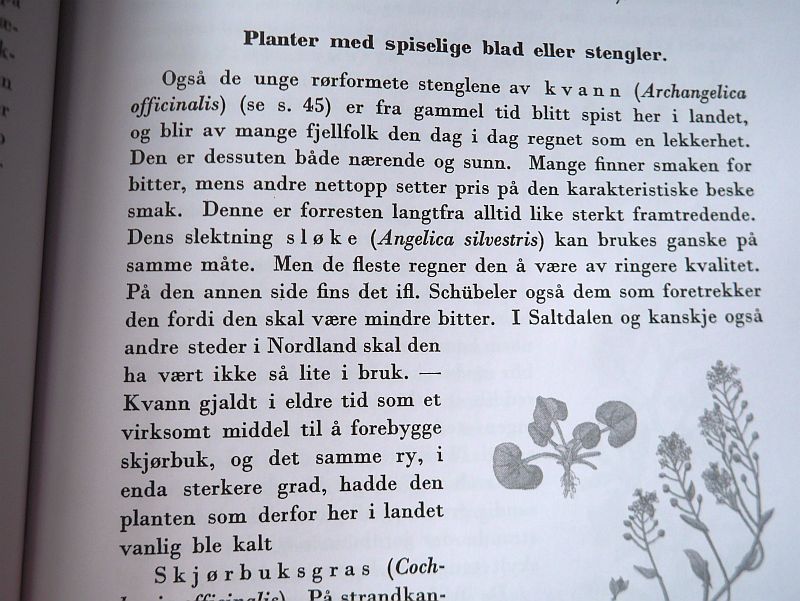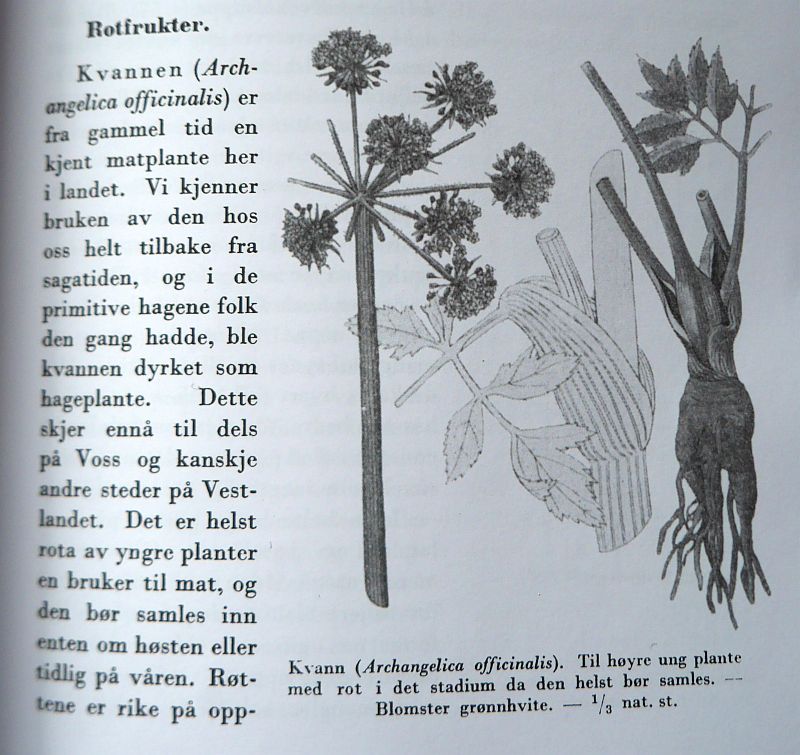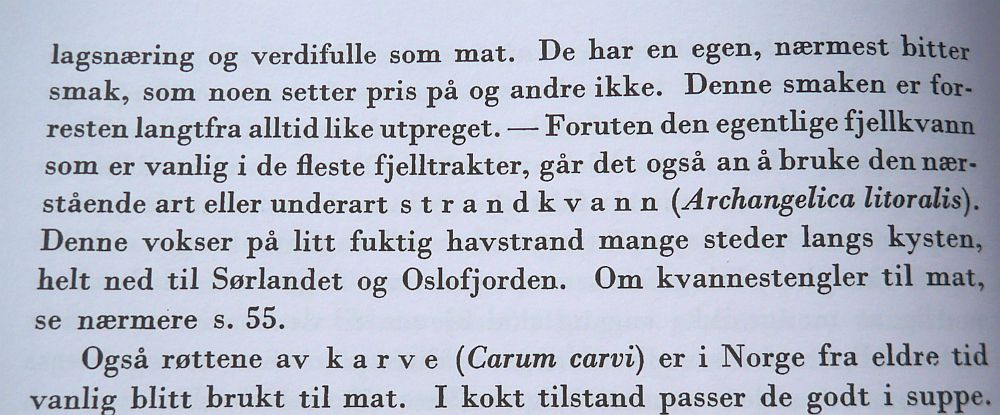To buy, see the bottom of this page (for å kjøpe, se nederst på denne siden).
Jens Holmboe’s book “Gratis mat av ville planter” (Free food from wild plants) from 1941 is still my favourite Norwegian book on wild food as it is well researched and includes a number of interesting anecdotes. I’ve had a photocopy of the whole book for many years (I think I borrowed it from my friend Jan Erik Kofoed and copied it at work in the 1980s). I finally own a copy of the book from the 2016 reprint! It had somehow passed me by that it was available! Thanks to Hanne Edvardsen from Trondheim Nyttevekstforening who gave me a copy at the recent Ringve Botanical Garden Open Day!
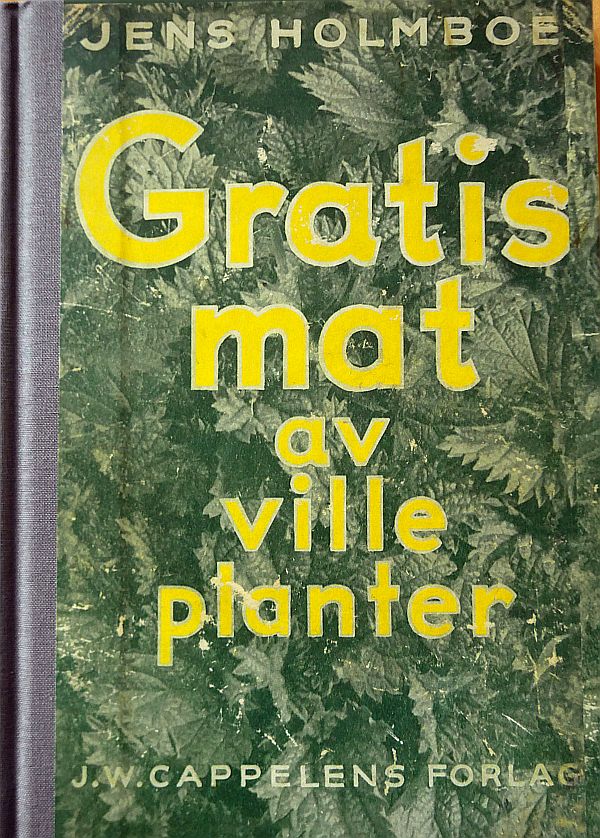
Interestingly, it does include the hogweeds / bjørnekjeks (Heracleum) including giant Tromsøpalme (Heracleum persicum, source of the spice golpar and a vegetable in Iran). However, I don’t think he could have tasted the latter when he wrote: “….skal være så besk at den neppe er å anbefale til folkemat” (…is apparently so bitter that it can hardly be recommended as food). Similarly, he mentions that Heracleum sibiricum is sometimes recommended for soups , together with other herbs….and it is likely to be too strong tasting for most people.
He writes about kvann (Angelica archangelica) as a wel known food plant in Norway right back to the time of the Vikings. He talks about it still being cultivated in Voss (and perhaps other places in western Norway). He encourages the use of roots as a nutritous food and indicates that some people like their bitter taste, others not. Unlike some books he also says that the subspecies litoralis (found on the coast of Norway) can also be used. He also says that Angelica sylvestris is much used in northern Norway and that it is less bitter!
Buy the book for kr. 250 plus postage by ordering through
sbarstow2@gmail.com
Payment either by Paypal, bank transfer or VIPPS (Norway). Please remember your address!
